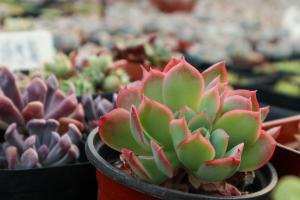1、 Curing method
1. Temperature: the high temperature resistance and cold resistance of keylip orchid are not high. Pay attention to controlling the temperature during growth. Of course, it grows better in a cooler environment. The normal growth temperature is 15 degrees to 30 degrees, and the high temperature in summer cannot be higher than 35 degrees, otherwise it will grow slowly. The temperature in winter should be controlled above 5 degrees to avoid frostbite

2. Watering: keylip orchid likes slightly dry soil. It can't be watered too often to prevent ponding, but it can't be watered without watering. If it won't bloom normally under the condition of water shortage, the significance of breeding will be lost. The frequency of watering can be controlled once every two or three days

3. Light: it belongs to shade loving plants, and strong light must be avoided. Usually, it needs to be placed in a dark indoor environment, because the keylip orchid grown in the field is generally behind a big tree, so if it is cultured at home, it is best to restore a similar environment, and do not be exposed to strong light, so it will wither

4. Fertilization: when fertilizing, it is best to choose farmyard fertilizer, because keylip orchid is relatively fragile. If fertilized indiscriminately, it will affect its growth. At the same time, some foliar fertilizer can be applied appropriately during growth to make its branches and leaves more shiny

2、 Breeding skills
1. Reproduction: ramet is its main reproduction method. Generally, it can be ramet once every three years, which can be carried out twice in spring and autumn. Select robust plants to ramet. The soil after ramet cannot be too wet, and it is best to be a little dry

2. Pruning: keylip orchid doesn't need to be pruned too much, because it is very short and doesn't grow very fast. The problem of overgrowth won't happen, so it's not recommended to prune it often. After pruning, it will recover very slowly

3、 Problem diagnosis and treatment
1. Disease: sheath rust will occur, and there will be obvious changes in the oil on the leaves. Dysen zinc powder can be used to control and improve

2. Insect pests: scale insects will occur. If there is a large number, Omethoate solution can be used for control

4、 Other issues
1. Toxicity: no toxicity. It can also be used as medicine, which is very suitable for breeding

2. Whether it can be raised at home: Yes, but it can't be raised on the balcony. The light stimulates the burning of plants. It's best to choose a darker environment


 how many times do yo...
how many times do yo... how many planted tre...
how many planted tre... how many pine trees ...
how many pine trees ... how many pecan trees...
how many pecan trees... how many plants comp...
how many plants comp... how many plants can ...
how many plants can ... how many plants and ...
how many plants and ... how many pepper plan...
how many pepper plan...































